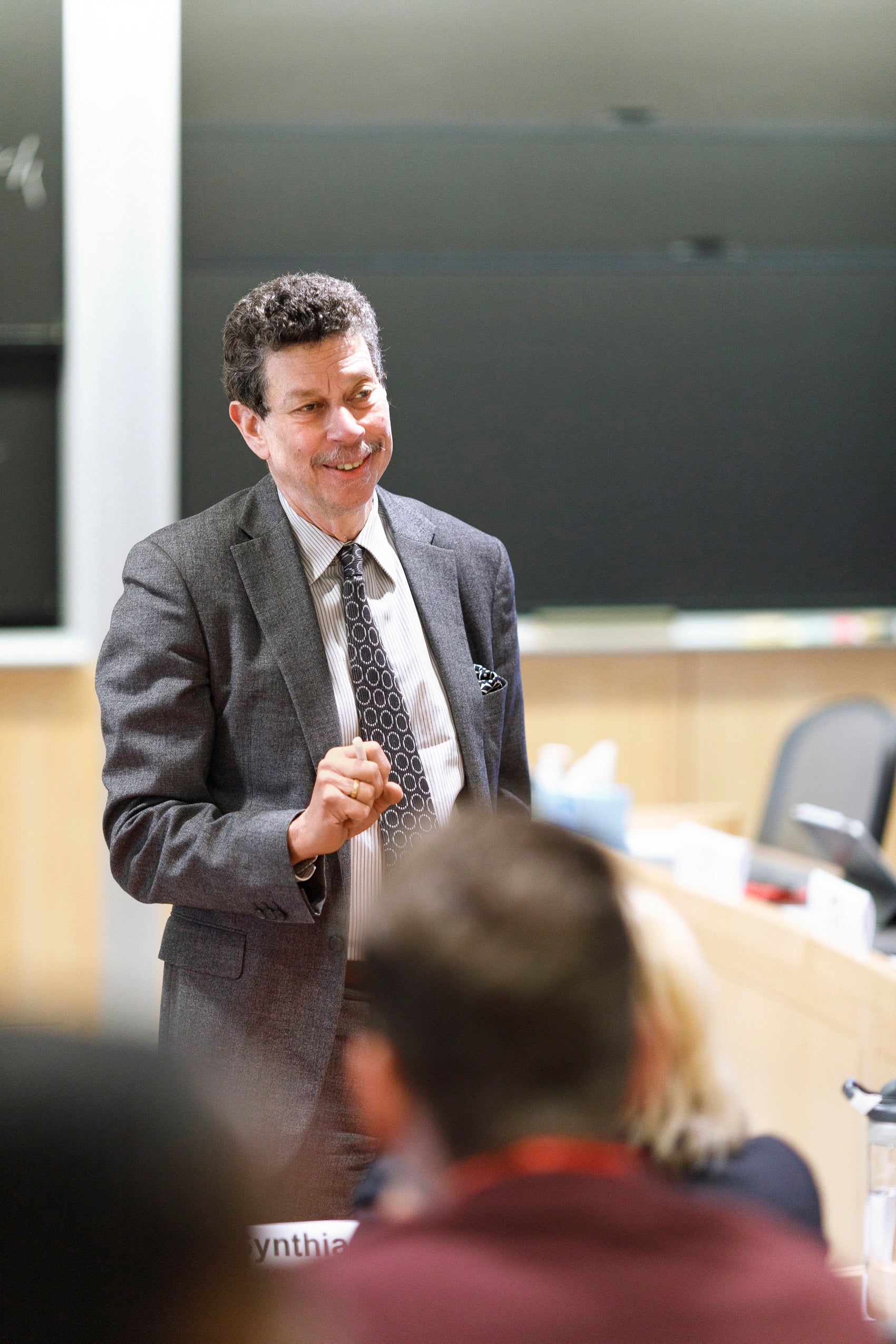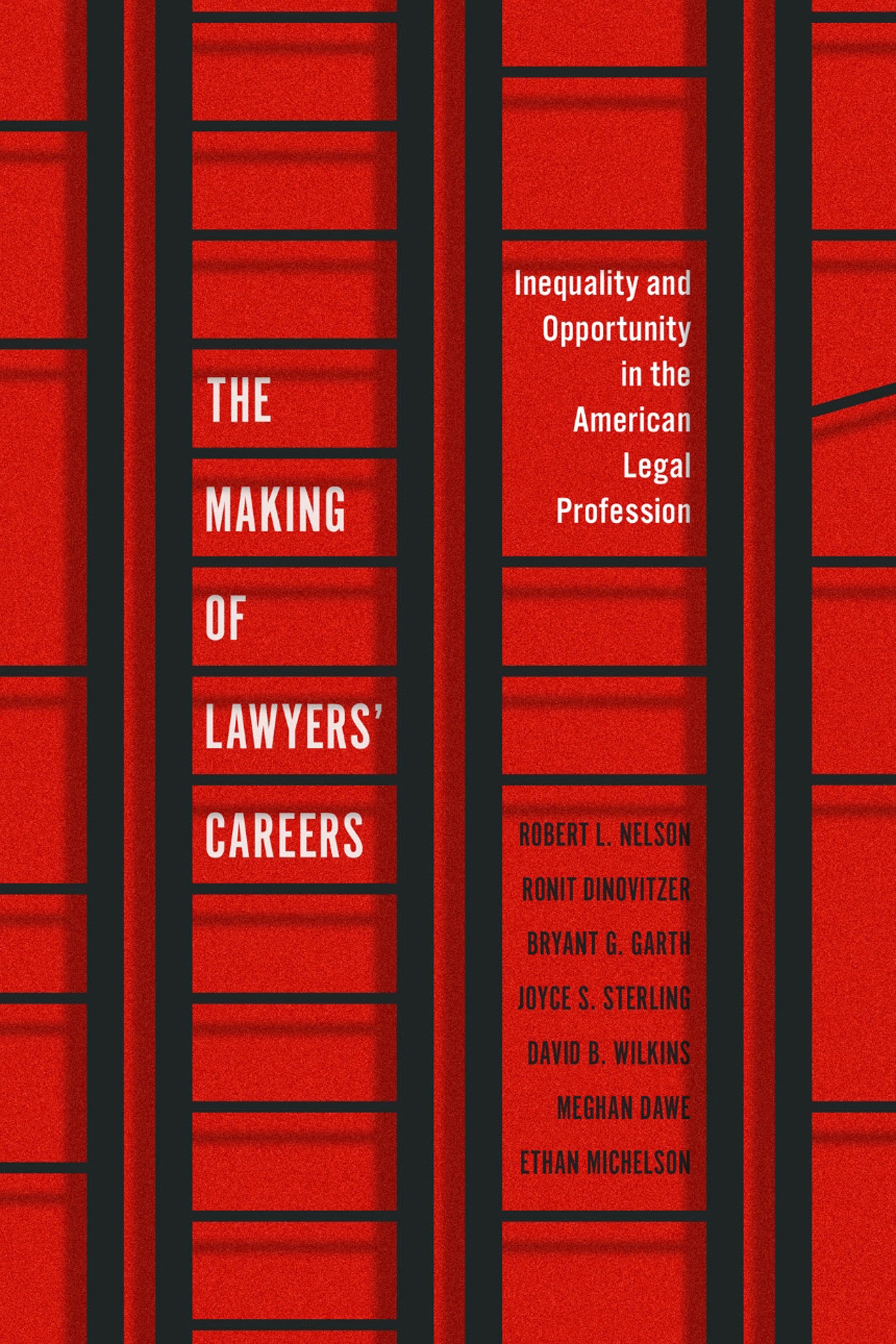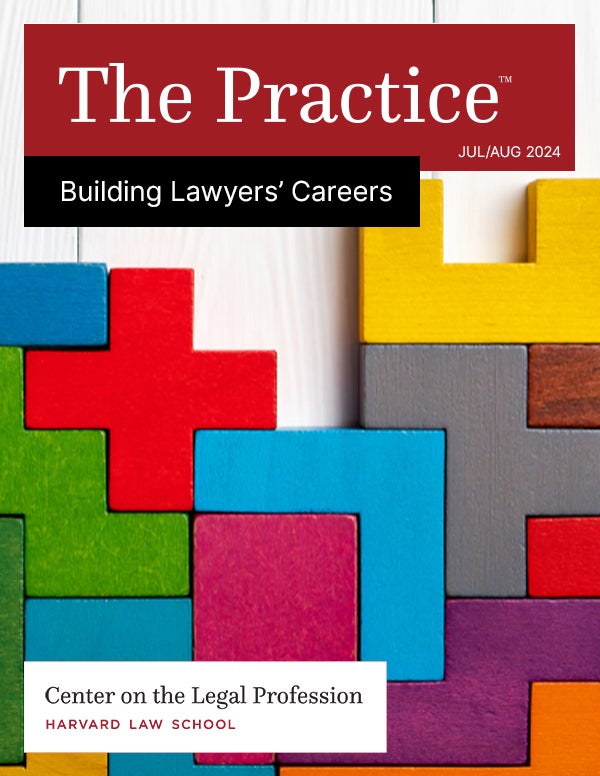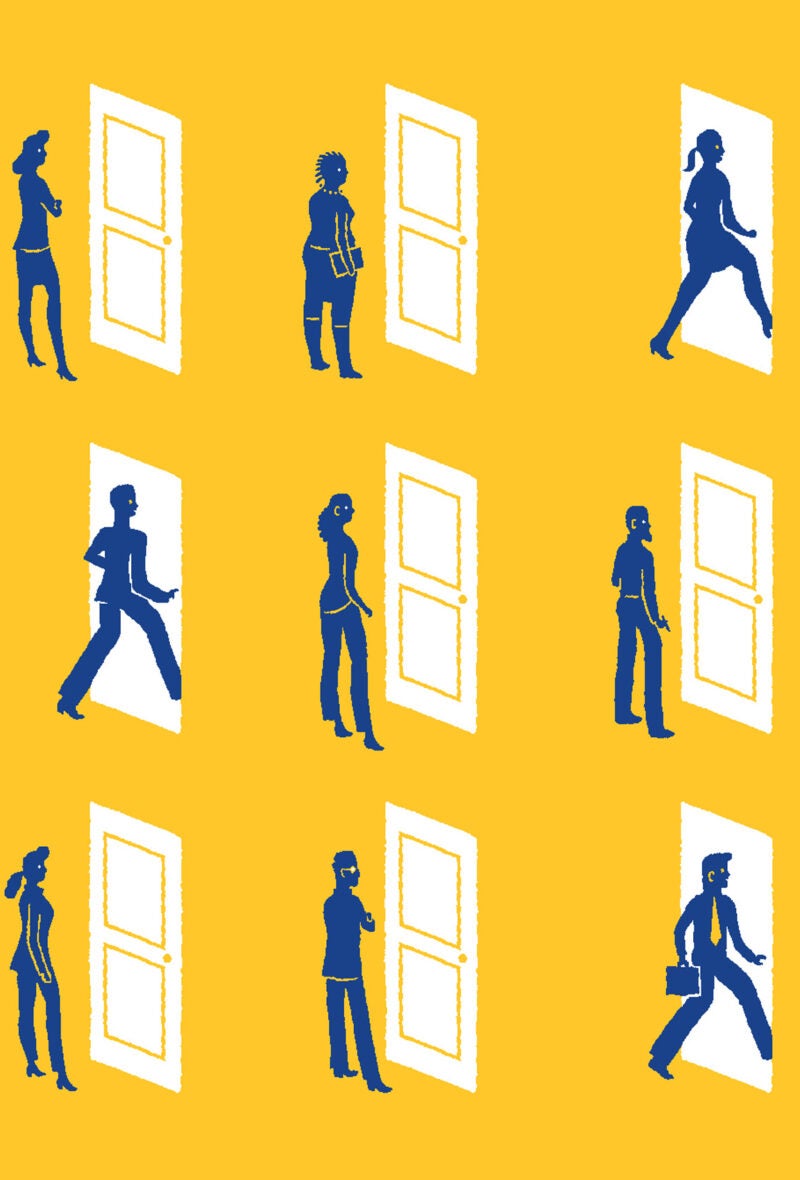People often assume that the advantages of attending an elite law school evaporate over the course of a lawyer’s career, because the quality of the work lawyers produce becomes more important than academic credentials. But on the contrary, the benefits of going to a top-ranked law school actually increase over the course of a lawyer’s career in terms of income, opportunities for prestigious jobs, and the ability to repay law school debt, according to the findings of a 20-year longitudinal study of the careers of lawyers.
This and many other myth-busting conclusions are the result of “After the JD,” a quantitative and qualitative analysis that includes more than 5,000 law graduates who entered the bar in 2000. It is the most comprehensive dataset ever collected about lawyers’ professional lives.

Launched in 2000 by a research team that included David Wilkins ’80, Lester Kissel Professor and faculty director of the Harvard Law School Center on the Legal Profession, the project tracked the careers of graduates from nearly every law school in the country, including unaccredited schools. These graduates were surveyed three times over the course of the project — in 2002-2003, 2007, and 2012-2013, with career tracking through LinkedIn and other sources through 2019 — with 2,035 respondents answering all three surveys. Many were further interviewed by researchers.
The result is a trove of data on everything from whether lawyers are satisfied in their careers — they generally are, despite widespread perceptions that they are unhappy — to how factors including gender, race, socioeconomic class, and law school status affect their professional development. The study was conducted in partnership with the National Association for Law Placement and the American Bar Foundation.
The project’s conclusions are now available in a book, “The Making of Lawyers’ Careers: Inequality and Opportunity in the American Legal Profession” (University of Chicago Press, 2023), written by Wilkins and Robert L. Nelson, Ronit Dinovitzer, Bryant G. Garth, Joyce S. Sterling, Meghan Dawe, and Ethan Michelson, with contributions from many others. “The book’s combination of quantitative, qualitative, and public records data provides a unique lens through which to consider the American legal profession,” the authors write.
Wilkins says the authors hope the abundance of “rich data” the book offers will be useful to three groups in particular: law students as they consider what they want from their careers; law schools as they design curricula to best serve students; and the public, because, he says, “What the profession looks like, who has access to it, and what the structures of opportunity are, are matters of interest and importance and concern far beyond the legal profession to our society as a whole.”
“I’m glad I did it, but if I’d had any idea how long it would take me, I’m not sure I would have entered into this project,” Wilkins adds, with a chuckle.
Here, Wilkins touches on a few key takeaways:
What are some of the surprising findings about the profession today versus 20 years ago, when the study started?
While there have been some tremendous changes, there is also remarkable continuity when we look at many of the structures beneath the surface of how the bar and the legal profession are organized, how careers operate, and who tends to end up in the most prestigious, high-paying positions. The people who are doing the best are white men with children. They were doing the best when we started the study, they were doing the best for the 50 years or 100 years before we started the study, and they still are doing the best, notwithstanding all the changes [in the profession]. That doesn’t mean every white man with children succeeds — or that every woman or person of color doesn’t — but on average [that’s what the study found].
The book includes a trove of data, including on how gender, race, and class affect lawyers’ professional development.
The book says that “racialization is a design feature baked into law firms.” How did that conclusion emerge from the data?
There’s a chapter in the book about how the ways in which law firms hire, develop, and promote people, and the culture of law firms, still today reinforce a view of who the right kind of lawyer is — what the fit of that lawyer is, what that lawyer looks like, and where that lawyer comes from. And that reinforces the inequalities of that process, even in the absence of intentional discrimination. It’s not that there isn’t racism in law; it would be foolish to think that there isn’t. … But if you ask me, Do I think that’s the main reason why we haven’t made nearly as much progress as we would have liked? No, I don’t think that, and in fact, quite the opposite.
Firms have spent tens of millions of dollars, probably collectively even more, promoting diversity. And yet, if you look at the partnership ranks in law firms … Black lawyers still constitute maybe 3% of the partners. And if you look at the equity partners that have power in these organizations, it would be an even smaller percentage. There are a lot more Black partners than there ever were before, but I don’t think anybody is satisfied or should be satisfied.
And we need to understand the underlying structures. That despite our best intentions — and I really do think that people have good intentions — we are still unable to make progress. And that’s what that chapter is about. That’s what most of my work is about.

The book looks at the professional lives of small-firm and solo lawyers, a group often overlooked, especially at elite law schools, though they make up the majority of the bar. What did you find?
We tell the stories of solo and small-firm practitioners who are extremely happy and successful at what they do. They feel like they have control and autonomy over their practices; they feel like they’re really helping their clients. And they’re making a good living — not on average what they might have made if they had one day become a partner in a major law firm, but they’re much happier, or at least, they think of themselves as much happier. So, there are success stories at every level.
Given the legal profession’s resistance to change, can you make predictions for the next 20 years?
There are huge projections of change for the legal profession in the next six months, let alone in the next five years, 10 or 20 years. … But what the book should make us cautious about is expecting that these changes will fundamentally alter the social structure of the bar or the big structural aspects of how law and careers in the legal profession work in this country. Because many of the things that come along as disruptions can be absorbed into existing hierarchies without changing them.
And there are lots of good reasons why lawyers put a brake on change. As much as things are changing with globalization, technology, the rise of sophisticated consumers exercising power over producers, if the last few years have taught us anything, it’s that there are a lot of things that should not change, like democracy, rule of law, individual freedom, and liberty. And lawyers are incredibly important to preserving these critical values — although, sadly, lawyers have sometimes played a role in undermining them too, something that the Center on the Legal Profession and its research partners are studying here in the United States and around the world. One factor that underlies both the positive and the negative roles that lawyers play in society is that “thinking like a lawyer” often means raising challenges or questions about change. At a societal level, this tendency toward conservatism in the classic sense can be helpful in understanding the value of traditional legal institutions and beliefs. But when lawyers turn that lens on their own professional institutions and values, it can lead to a kind of inertia and resistance to doing anything new, because it’s not the way we’ve always done it. I’m hoping that a young and energetic team of socio-legal researchers will decide to study how the interplay of these forces shape lawyers’ careers over the next 20 years!

The Making of Lawyers’ Careers: Inequality and Opportunity in the American Legal Profession
The Practice, the magazine of the Harvard Law School Center on the Legal Profession, celebrated “The Making of Lawyers’ Careers: Inequality and Opportunity in the American Legal Profession” in its July/August 2024 issue. It included interviews with three of the book’s authors: Robert Nelson, professor of sociology at Northwestern University, who details the historical circumstances of the legal profession over the past 50 years; Bryant Garth, professor of law emeritus at the University of California Irvine School of Law, who explores how lawyers manage their careers in the face of opportunities and obstacles, and Ronit Dinovitzer, professor of sociology at the University of Toronto, who discusses inequality in the profession. It also features Mary Smith, 2023-2024 president of the American Bar Association and the first Native American woman to hold that position, who argues that the world needs lawyers more than ever to uphold democracy in the face of rising challenges to the rule of law and to give voice to the voiceless. Read the issue of The Practice.
